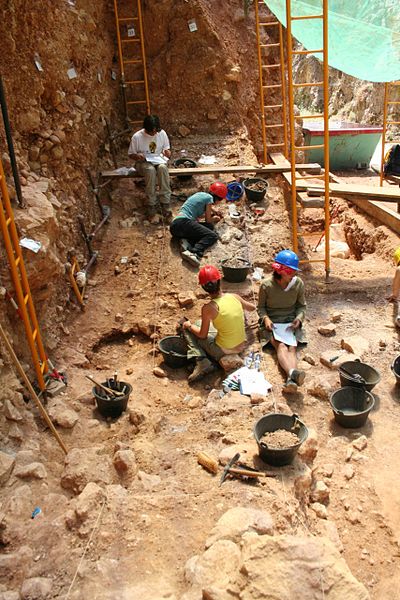 |
| Excavators at work at the Sima del Elefante site. Mario Modesto Mata, Wikimedia Commons |
Dated to over 1.2 million years ago, artifacts tell a story of early human settlement in Europe.
In a research paper published in the online Journal of Human Evolution, scientists are reporting the results of years of study on early human stone tool assemblages unearthed at the famous Sima del Eefante cave site in Spain.
According to the authors, the tools, along with human fossils and other fossilized faunal remains, provide a record of human habitation at the site going back to about 1.22 million years, or the Early Pleistocene period—a time long before the arrival of early modern humans in Europe around 40,000 - 45,000 years ago.
“This site has characteristics that are of great value for the study of human evolution,” write the authors in the report abstract. “The lower levels….are an essential reference for understanding the early stages of the colonization of Europe.” [...] popular-archaeology.com
Reference: Arturo de Lombera-Hermida et al., The lithic industry of Sima del Elefante (Atapuerca, Burgos, Spain) in the context of Early and Middle Pleistocene technology in Europe, Journal of Human Evolution
Related post







No hay comentarios:
Publicar un comentario